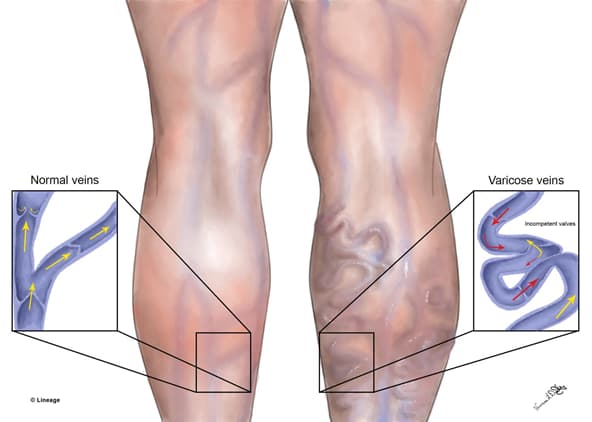Overview

Snapshot
- A 46-year-old woman presents for the evaluation of “visible” veins in both her lower extremities. She describes this as unappealing, but denies any associated discomfort. She has worked as a cashier for the past 10 years, where she spends the majority of her time standing. On exam, there are palpable, dilated tortuous subcutaneous veins measuring approximately 3.5 mm in diameter while in the upright position.
Introduction

- Varicose veins
- palpable, distended, tortuous, subcutaneous veins
- involved vessels
- saphenous vein
- also involves saphenous tributaries
- may involve non-saphenous superficial veins of the leg
- saphenous vein
- Etiology
- primary (e.g., primary venous disease)
- secondary (e.g., previous deep vein thrombosis)
- congenital (e.g., Klippel-Trenaunay syndrome)
- Pathogenesis
- Epidemiology
- risk factors
- advanced age, family history, prolonged standing, and multiparity
- risk factors
- more common in women than in men
Presentation
- Symptoms
- may be asymptomatic or may describe calf heaviness/swelling
- Physical exam
- palpable, distended, tortuous, subcutaneous veins
Evaluation
- Clinical diagnosis
- Duplex ultrasound
Differential Diagnosis
- Reticular veins
- Telangiectasias
Treatment
- Compression therapy
- can accompany leg elevation and exercise
- Vein ablation therapy
Prognosis, Prevention, and Complications
- Prognosis
- in untreated patients
- may be asymptomatic
- may result in skin changes, venous ulcers, and superficial thrombophlebitis
- in untreated patients
- Complications
- skin changes/venous ulcers
- may develop complications after certain procedures



